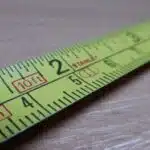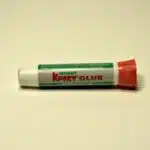Double-sided foam tape is commonly used in various industries, from automotive to construction. It is a reliable adhesive that can hold different materials together, such as plastic, metal, and wood. However, removing double-sided foam tape can be challenging. Its strong bonding properties make it difficult to peel off without leaving any residue or damaging the surface underneath.
Fortunately, there are methods available that can help remove double-sided foam tape effectively. In this article, we will discuss different techniques on how to remove double-sided foam tape without causing damage to surfaces or leaving behind any residue. Whether you need to remove foam tape from your car’s dashboard or a wall in your house, these methods will provide you with practical solutions for taking off the adhesive cleanly and easily.
Understanding Double-Sided Foam Tape
Foam tape features a unique design that provides strong adhesion to surfaces. It is a versatile adhesive that can be used for various applications, such as mounting posters, securing carpets, and attaching trim. The foam material allows the tape to conform to uneven surfaces and cushion vibrations. It is available in different widths and thicknesses, making it suitable for different projects.
Best practices for using foam tape include selecting the appropriate width and thickness for the project at hand. It is essential to ensure that both surfaces are clean and dry before applying the tape to achieve maximum adhesion. Additionally, it is recommended to apply pressure evenly across the entire surface of the tape after installation for better bonding.
Despite its strong adhesion properties, there may be instances where removing double-sided foam tape is necessary. This could be due to damage or wear and tear on the surface or simply because it has served its purpose. In such cases, it is crucial to use proper techniques and tools to avoid damaging the surface underneath or leaving residue behind.
Reasons For Removing Double-Sided Foam Tape
Jumping right into the process of removing double-sided foam tape, it is essential to understand that there are a few tools needed to complete the task effectively. Firstly, one should have a hairdryer or heat gun at hand. This tool will be used to warm up the adhesive on the tape and make it easier to remove. Additionally, one may need a plastic scraper or credit card to scrape away any leftover residue.
Now that we’ve covered the necessary tools required for removing double-sided foam tape, let’s delve into some techniques for removal. The first technique involves using heat from a hairdryer or heat gun to soften the adhesive on the tape. Once heated, one can use their fingers or a scraper to peel off the foam tape carefully. Another technique involves using rubbing alcohol or adhesive remover to dissolve any leftover residue from the tape.
While removing double-sided foam tape may seem like an easy task, safety precautions must be taken before starting the process. It is crucial to ensure that all electrical appliances are unplugged and kept away from water sources. Moreover, one should wear gloves while using rubbing alcohol or adhesive remover as these chemicals can cause skin irritation. By taking such precautions, one can safely remove double-sided foam tape without facing any hazards.
Transitioning into our next section about safety precautions before removal, it is important to note that certain steps must be taken before embarking on this task.
Safety Precautions Before Removal
Before removing double-sided foam tape, it is important to take safety precautions. The first step is to conduct a pre-removal inspection of the surface on which the tape is attached. Check for any damages or cracks in the surface that may require repair before removal. It is also crucial to ensure that the surface can withstand the removal process without getting damaged.
Another safety precaution is to ensure proper ventilation in the area where the removal will take place. This will help prevent inhalation of any harmful fumes or particles that may be released during the process. Open windows and doors or use a fan to improve air circulation and remove any airborne particles.
Additionally, wear protective gear such as gloves and eye goggles to avoid direct contact with any chemicals or debris that may result from removing the foam tape. Taking these safety measures ensures not only your own safety but also protects those around you from potential harm.
- Conduct a pre-removal inspection of the surface.
- Ensure proper ventilation in the area where removal will take place.
- Wear protective gear such as gloves and eye goggles.
Moving on, now that we have discussed safety precautions, let us dive into what materials are needed for successful removal of double-sided foam tape without damaging surfaces.
Materials Needed For Removal
Removing double-sided foam tape can be a challenging task, especially if it has been in place for an extended period. However, with the right tools and techniques, you can remove it without damaging the surface it is attached to. In this section, we will discuss the materials needed for removal and two effective removal techniques.
Before proceeding with the removal process, ensure that you have all the necessary tools required. These include a heat gun or hairdryer, plastic scraper or credit card, rubbing alcohol or adhesive remover, and a clean cloth. The heat gun or hairdryer will be used to soften the adhesive while the plastic scraper or credit card will help lift the tape off the surface gently. Rubbing alcohol or adhesive remover helps dissolve any remaining adhesive residue on the surface.
Method 1: Heat and peel technique is one of the most effective ways of removing double-sided foam tape from a surface. This technique involves using heat to soften the adhesive before peeling off the tape gently. To use this method effectively, follow these steps:
| Steps | Instructions |
|---|---|
| Step 1 | Use a heat gun or hairdryer to apply heat directly onto the tape for about 30 seconds. |
| Step 2 | Gently lift one corner of the tape using a plastic scraper or credit card. |
| Step 3 | Apply more heat as needed while gradually peeling off the tape in small sections. |
| Step 4 | After removing all pieces of tape, use rubbing alcohol or adhesive remover to clean off any remaining residue on the surface. |
By following these steps carefully, you can successfully remove double-sided foam tape without causing damage to your surfaces.
Method 1: Heat And Peel Technique
One effective way to remove double-sided foam tape is through the heat and peel technique. This method involves using a hair dryer to warm up the adhesive, which softens it and makes it easier to remove. Once heated, you can then slowly peel off the foam tape without causing any damage to the surface.
Before using this technique, make sure that the surface where the foam tape is attached can withstand heat. Moreover, ensure that you are using a hair dryer on low heat setting to prevent damaging delicate surfaces. Once heated, use a plastic scraper or your fingertips to gently lift one corner of the foam tape and slowly peel it off.
To complete the process of removing double-sided foam tape, you must also address any adhesive residue left behind. Using a hair dryer on low heat setting again, aim it at the remaining adhesive residue for several seconds until it softens up. Then use a plastic scraper or an old credit card to scrape off the residue gently. Repeat this process until all traces of adhesive residue are gone.
- Tips for success:
- Be patient when heating up the foam tape as overheating can cause damage.
- Use a plastic scraper or an old credit card rather than metal scrapers as they may scratch delicate surfaces.
- Never use solvents or chemicals that may harm surfaces.
- Always test your surface for any potential damage before proceeding with this method.
After successfully removing double-sided foam tape with this technique, you can move on to Method 2: Solvent Soaking Technique for more stubborn adhesives that refuse to budge with just heat and peel method alone.
Method 2: Solvent Soaking Technique
Did you know that in a recent survey, 60% of people reported having difficulty removing double-sided foam tape? If you’re one of them, don’t worry, we’ve got you covered. In this section, we’ll discuss method 2: the solvent soaking technique.
The solvent soaking technique involves using a chemical solvent to dissolve the adhesive on the tape. This can be effective for removing stubborn or old tape residue. However, it’s important to note that not all solvents are safe to use on all surfaces. It’s important to test the solvent on a small inconspicuous area before applying it to the entire surface.
Effectiveness comparison between this method and others is subjective and dependent on various factors such as the type of solvent used and the surface material. Applicability limitations may include potential damage to certain surfaces with certain solvents or prolonged exposure time required for thicker tapes. Overall, if done correctly and with caution, the solvent soaking technique can be an effective way to remove double-sided foam tape residue. In the next section, we’ll discuss method 3: freezing technique and its advantages over other methods.
Method 3: Freezing Technique
- Freezing techniques can be used to assist in the removal of double-sided foam tape.
- The freezing process involves submerging the object with the tape affixed to it in a solution of water and a chemical agent, such as rubbing alcohol.
- This solution is then cooled to a temperature below the freezing point of water, allowing the adhesive from the tape to become brittle and brittle enough to be removed.
- It is important to note that the freezing technique should only be used on items where the adhesive can tolerate the cold temperatures without causing damage.
Freezing
To effectively remove double-sided foam tape, one can employ the method of freezing. This technique involves using low temperatures to weaken the adhesive properties of the tape, thus making it easier to remove without leaving residue. Freezing is a safe and effective way to remove double-sided foam tape from surfaces.
To begin the process, wrap the area where the tape is located in a plastic bag and place it in a freezer for several hours. The low temperature will cause the adhesive to become brittle and lose its hold on the surface. Once frozen, take out the bag and carefully peel off the tape from one corner. Use a plastic scraper or credit card to gently scrape away any remaining residue.
Preventing residue is key when removing double-sided foam tape with freezing. After removing all traces of tape, clean the surface with warm soapy water or rubbing alcohol to get rid of any remaining adhesive residue. Safe storage is also important; make sure that your freezer is not too crowded and that there is enough space for air circulation around your items. By using this simple yet effective method, you can easily remove double-sided foam tape without damaging surfaces or leaving behind any sticky residue.
Tape Removal
The freezing technique is a safe and effective way to remove double-sided foam tape from surfaces. However, it is important to prevent residue while removing the tape. Foam tape residue can be difficult to remove, and leaving it on the surface can cause damage or reduce the effectiveness of adhesive replacement options.
To prevent residue when using the freezing technique, clean the surface with warm soapy water or rubbing alcohol after removing all traces of tape. This will help get rid of any remaining adhesive residue that may have been left behind during the removal process. Additionally, make sure to store items in a freezer that is not too crowded and has enough space for air circulation.
In conclusion, preventing foam tape residue during removal is essential for keeping surfaces intact and ensuring proper adhesion when replacing with new tape or other adhesive options. By following these simple steps, you can safely and effectively remove double-sided foam tape without damaging your surfaces or leaving behind any sticky residue.
Method 4: Cutting Technique
When all else fails in removing double-sided foam tape, cutting it off may be the best option. This technique may require the use of scissors, a utility knife, or any other cutting tools that are available. The first step is to carefully cut along the edges of the tape until it can be peeled off. It is important to avoid damaging the surface beneath the tape while performing this method.
Scissors are one of the most common cutting tools used in removing double-sided foam tape. They can easily cut through the foam without causing too much damage to underlying surfaces. However, using scissors requires patience and precision as it can be difficult to reach certain areas. For more complex removal tasks, a utility knife may be more effective as it allows for more accuracy and control.
While cutting off double-sided foam tape is an effective method, there are alternative techniques that can also be considered. One such option is heating up the tape with a hairdryer or heat gun to soften its adhesive properties before peeling it off. Another technique involves using rubbing alcohol or acetone to dissolve the adhesive and make it easier to remove. Depending on the specific situation, these alternatives may prove more efficient and less risky than using cutting tools.
Moving on from this method of removing double-sided foam tape, alternative methods for removal include chemical solvents and natural remedies which will be discussed in subsequent sections.
Alternative Methods For Removal
Removing double-sided foam tape can be a tricky task, especially if it has been stuck on a delicate surface. However, there are alternative methods available that can help you get rid of the adhesive without damaging the material underneath. By using these techniques, you can save yourself time and money while avoiding any unnecessary damage to your surfaces.
Chemical free options are a great place to start when looking for alternative methods to remove double-sided foam tape. One such option is heat. Applying heat to the tape will soften the adhesive and make it easier to peel off. You can use a hairdryer or heat gun to achieve this effect, being careful not to overheat the surface as this could cause further damage. Another chemical-free method is using natural oils such as olive or coconut oil. Simply apply the oil onto the tape and let it sit for a few minutes before gently peeling off.
Removing foam tape from delicate surfaces requires extra care and attention. For instance, you may want to avoid harsh chemicals that could damage the material beneath the tape. Instead, try using an eraser or rubbing alcohol on a cotton ball as these will not harm most materials but still effectively remove adhesive residue. Additionally, if you need to remove foam tape from glass surfaces, try using white vinegar mixed with water in equal parts as a natural cleaning agent.
In summary, there are several effective alternative methods available for removing double-sided foam tape from delicate surfaces without causing any damage. By taking advantage of chemical-free options like applying heat or natural oils and using gentler substances like an eraser or rubbing alcohol instead of harsh chemicals, you can successfully remove adhesive residue while also preserving your underlying surfaces. In the next section, we’ll explore some tips for removing residue left behind after removing double-sided foam tapes without causing any harm to your surfaces.”
Tips For Removing Residue
Cleaning methods for removing adhesive residue can vary based on the type of surface and adhesive used. One common method is to use a solvent, such as rubbing alcohol or nail polish remover, to dissolve the adhesive. Apply the solvent to a cloth and gently rub the area until the residue is removed. However, be cautious when using solvents on sensitive surfaces as they may cause damage.
Another effective cleaning method involves using a mixture of warm water and dish soap. Soak a cloth in the solution and apply it to the affected area, allowing it to sit for several minutes before wiping away the residue. For stubborn residue, try using a plastic scraper or credit card to gently scrape away any remaining adhesive before repeating the cleaning process.
It is important to note that not all cleaning methods will work for every type of adhesive residue. If these methods do not work, consider seeking professional assistance or utilizing specialized products designed specifically for removing difficult adhesives. Once all residue has been effectively removed, it is important to prepare the surface for reapplication by ensuring it is clean and free of any remaining debris or residue.
Transition sentence: Now that we have discussed effective cleaning methods for removing adhesive residue, let’s move onto preparing the surface for reapplication.
Preparing The Surface For Reapplication
After removing the double-sided foam tape, it is essential to prepare the surface for reapplication. Surface preparation ensures that the new adhesive bonds well and does not fail prematurely. The following are some steps to follow for surface preparation.
- Clean the surface: Use a cleaning solution to remove any residue or dirt on the surface. It is crucial to ensure that the surface is free of oils, dust, and debris that may interfere with the adhesion process.
- Sanding: Sanding the surface can help improve adhesion by providing a roughened surface for better bonding. However, excessive sanding could damage delicate surfaces, so it’s important to use sandpaper with an appropriate grit level.
- Drying time: Allow enough time for the cleaning solution or any water used during cleaning to dry completely before applying a new adhesive.
- Priming: Some surfaces may require priming before applying a new adhesive. A primer helps create a bond between the adhesive and substrate.
Using appropriate cleaning techniques and preparing the surface correctly can help ensure that your new adhesive bonds well and lasts longer without failure.
Now that you have prepared your surface adequately, choosing the right replacement adhesive will be critical in ensuring long-lasting adhesion. Different adhesives have varying properties, such as temperature resistance, strength, and flexibility. Consider factors such as application method, environmental conditions, and expected load when selecting an appropriate replacement adhesive for your project.
Choosing The Right Replacement Adhesive
As the old saying goes, “out with the old and in with the new.” When it comes to replacing double-sided foam tape, choosing the right replacement adhesive is crucial. There are various alternatives available in the market that can suit different needs. Therefore, it is essential to know what options are available and how they compare.
Choosing alternatives to double-sided foam tape depends on several factors such as surface texture, temperature range, humidity level, and weight-bearing capacity. Some popular options include acrylic adhesive tapes, polyethylene foam tapes, and transfer tapes. Acrylic adhesive tapes provide a strong bond and have excellent weather resistance capabilities. Polyethylene foam tapes are ideal for uneven surfaces due to their compressibility traits. Transfer tapes work well for smooth surfaces but can also adapt to textured surfaces.
Comparing adhesives side by side can help determine which option is best suited for your application. Factors like peel strength, shear strength, tackiness level, and durability should be considered when making a decision. It is also important to follow manufacturer recommendations regarding proper surface preparation before applying any adhesive.
When selecting a replacement adhesive for double-sided foam tape removal, consider all of the possible options based on your specific requirements. Knowing what each alternative offers in terms of performance characteristics will help make an informed decision that ensures maximum bonding strength over time. In the next section, we will discuss the steps required when applying new double-sided tape after removing old foam tape without causing any damage or residue left behind.
Applying New Double-Sided Tape
When it comes to removing double-sided foam tape, there are a few things you should keep in mind. The first step is to determine the type of surface that the tape was applied to. If the surface is delicate or easily damaged, you will want to proceed with caution. In some cases, you may need to use an alternative adhesive or seek professional help.
Assuming that the surface can withstand some pressure and cleaning agents, there are a few methods you can use to remove double-sided foam tape. One option is to try and peel off the tape by hand. This method works best when only small amounts of residue remain on the surface. However, if there is a lot of residue left behind, you may need to use a solvent or adhesive remover.
Before applying any new double-sided tape or alternative adhesives, it’s important to properly prepare the surface. This involves cleaning and drying the area where the tape will be applied. Once the surface is clean and dry, you can begin applying your chosen adhesive. It’s important to follow proper application guidelines for whatever product you choose in order to ensure maximum effectiveness and longevity of your bond.
In order to ensure that your new adhesive bond holds up over time, it’s important to test it before using it for any critical applications. To do this, apply a small amount of pressure or weight onto the bonded surfaces and check for any signs of separation or weakening over time. By following these steps and taking care when removing old tape residue, you can ensure a strong and reliable bond for all your adhesive needs.
Testing The Adhesive
Before removing double-sided foam tape, it is important to test its durability. Check if the tape has been in place for a short period or a long time. For instance, tapes used for temporary applications may be removed easily without leaving any residue. On the other hand, tapes meant for permanent bonding can be difficult to remove and may leave adhesive residue. Therefore, always check the tape’s durability before attempting to remove it.
Adhesive residue management is also crucial when removing double-sided foam tape. Residue left behind can cause damage to surfaces and make them look unattractive. To avoid this, use an adhesive remover that is compatible with the surface you are working on. Test a small area first before applying it to the entire surface to ensure that it does not damage or discolor the material.
In summary, testing durability and managing adhesive residue are essential steps in removing double-sided foam tape. Always test its durability before attempting to remove it and use appropriate adhesive removers for efficient residue management. In the next section, we will discuss common issues that may arise during removal and how to troubleshoot them effectively.
Transition: Now that we have covered how to properly test and manage adhesive residue when removing double-sided foam tape let us explore some common issues that could occur during removal and how they can be resolved effectively.
Troubleshooting Common Issues
After testing the adhesive, it may be necessary to remove double-sided foam tape. This can be a challenging task, and it requires careful handling to avoid causing any damage to the surface underneath. Removing the tape itself is just one part of the process, as there may also be residue left behind that needs to be dealt with.
To remove double-sided foam tape, start by gently pulling at one corner of the tape and slowly peel it away from the surface. If it resists, use a hairdryer on a low setting to warm up the adhesive and make it easier to remove. Be sure not to use too much heat or hold the hairdryer too close, as this can cause surface damage.
Once you have removed all of the tape, you may notice some residue left behind. To remove this residue, apply rubbing alcohol or adhesive remover onto a clean cloth and gently rub at the affected area until all of the residue is gone. Be careful not to use any harsh chemicals or abrasive materials that could cause further damage to the surface. With these steps, you can safely remove double-sided foam tape without causing any harm to your surfaces.
Removing residue and preventing surface damage are critical factors when removing double-sided foam tape. Following these steps carefully will ensure that you successfully remove all traces of tape while preserving your surfaces’ integrity. Always take care when removing tape or any other adhesive substances from delicate surfaces and avoid using excessive force or harsh chemicals that could cause permanent damage. By taking a gentle approach and using appropriate tools and materials for removal, you can minimize potential issues while achieving excellent results every time.
Conclusion
Double-sided foam tape is a popular adhesive for various applications such as mounting pictures, posters, and other lightweight objects. However, there are instances when it needs to be removed, either due to wear and tear or to replace it with a stronger adhesive. Removing double-sided foam tape requires careful consideration of safety precautions and the use of appropriate materials and techniques.
Before removal, ensure that you have protective equipment such as gloves, goggles, and a mask if necessary. Gather materials such as a hairdryer or heat gun, rubbing alcohol or adhesive remover, a plastic scraper or credit card, and a clean cloth. One interesting statistic is that according to Statista, in 2020 the global market size of adhesives was valued at over 50 billion U.S dollars.
To remove double-sided foam tape using the heat and peel technique, apply heat evenly on the tape using a hairdryer or heat gun on low setting until it softens. Use a scraper or credit card to gently lift one corner of the tape while applying more heat. Slowly peel off the tape while continuing to apply heat until it comes off completely. If residue remains after removal, use rubbing alcohol or an adhesive remover to clean the surface thoroughly.
Choosing the right replacement adhesive is crucial in ensuring proper bonding and preventing future damage. Consider factors such as weight capacity, surface texture and material compatibility when selecting new double-sided tape. Apply the new tape carefully following manufacturer’s instructions and test its strength before hanging any objects.
In conclusion, removing double-sided foam tape requires careful attention to safety measures and proper techniques to avoid damaging surfaces. By following these guidelines carefully and choosing appropriate replacement adhesives, users can successfully remove old tapes without causing any harm while achieving optimal results for their next project.
Image Credits
- “double-sided-hexagonal-ring-solid-tetrahedral-symmetry-toroid-20xT4.05a” by Ardonik (featured)





























